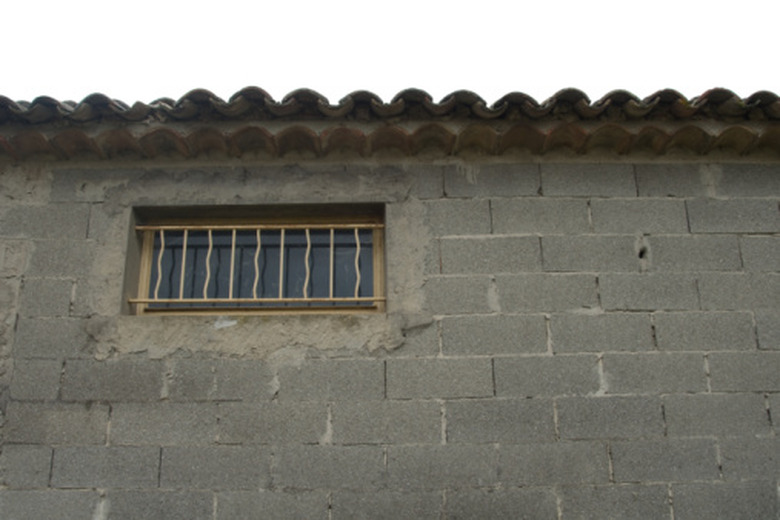Ideas For Finishing An Interior Concrete Block Wall
If you are finishing a basement, or if you live in a house that is built entirely of concrete blocks, you may be faced with the unsightly presence of an interior wall made of exposed concrete blocks. Covering up these blocks will greatly improve the aesthetics of your interior living space. There are several ways to do this that are neither difficult nor expensive.
Pargeting
Pargeting
Pargeting is the traditional way of covering up concrete blocks. This material is made of lime, sand and water, and is essentially the same product as what is put between the blocks when the wall is built. Parget is spread over the surface of the wall with a trowel and smoothed out to create an even surface that hides the joints between the blocks. The trick to pargeting is to spread it thickly enough that it effectively hides these joints, but not so thickly that it peels off the wall because it is too heavy. Experiment with the water content and thickness of the parget, and you will soon learn what works best for your wall and your conditions. You will inevitably drop some of the parget on the floor, so spread a drop cloth beforehand to save yourself some cleanup time.
Painting
Painting
If you can't be bothered with parging, you can still improve the look of your wall by painting it. Painting won't hide the joints between the blocks, but it will take away the drab gray color of the blocks and replace it with whatever color you prefer. Begin by priming the blocks to improve the adhesion of your finish coat. For interior applications, water-based latex primer and finish paint should work fine. If you are painting basement walls, use a bright, light-toned paint to maximize the light in the space and to make it feel a bit larger and more spacious. If you're looking for a bit of craziness, try painting each block a different bright color.
Wood Paneling
Wood Paneling
You can hide your concrete blocks altogether by facing the wall with wood paneling. To do this, attach horizontal furring strips to the wall using a hammer drill and screws that are made to drive into concrete. You can then attach tongue and groove pine boards vertically to the furring strips, creating a beautiful wood wall in place of your ugly concrete block wall. You could also attach drywall to the furring strips for a less expensive alternative. Treating the wood paneling with linseed oil will give it a rich tone and help to protect it from dirt and wear.
